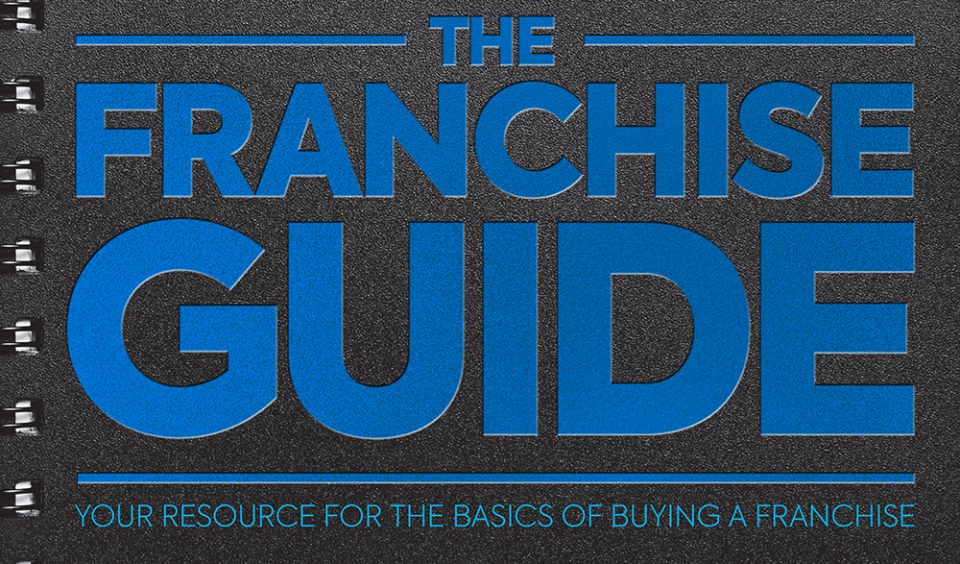Regardless of the franchise opportunity you choose to pursue, you need to map out your path to business success before getting started. By establishing a business plan, you’re signalling to lenders, and the franchise system, that you’ve established and understand the tools you need to succeed. You’re ready to work hard and do what it takes to make your business dreams become a reality.
At the Franchise Canada Show in Calgary this past January, John Leavitt, a partner at BDO, shared information that prospective franchisees need to establish a strong business plan and kickstart their franchising careers. As the national franchise industry leader at BDO, Leavitt has extensive experience working in the franchise industry, helping clients with their accounting, tax, and advisory needs.
Here, Leavitt shares what you need to know as you look to build the business plan that will put you on the path to franchising success.
Who should write the business plan?
When you realized that your bank requires a business plan to provide you with financing options, your immediate thought was likely that you don’t know where to begin. You may be tempted to find someone to do this for you, but ultimately, this responsibility lies with you. You can seek assistance from franchise professionals, but you need to understand and present what your plans are for the business, rather than someone else’s.
Remember, you may need to build a business plan because the bank has asked for one. It’s important to do so because you want to map out and ensure your business is going to succeed. This is an important part of the due diligence process that will improve your chances for building a profitable franchise business.
So, what needs to be included in your business plan?
Your business plan
- Executive summary
The executive summary should:
- describe the franchise you intend to purchase
- include the background and track record of the franchisor and other existing franchisees
- include a background of your products and services, while identifying your core market
If you’re looking to join an established franchise, you’ll likely want to focus on that. If it’s a newer franchise system, you should focus on the market trends and opportunity available.
- Management team profile
This is the most important part of a business plan for many lenders. The management team profile should:
- describe your skills and experience
- explain why you’re suited to own and operate this franchise
- include the same information for any other members of your management team
This is the place to highlight any attributes that make you particularly suited for this franchise, and to share any details about any previous business success. The more the lender believes in you, the more likely they are to provide the financing you need.
- Description of products and services
The description of your products or services should include:
- featured benefits
- explanation of how your product or service differs from those of your competitors
- outline how you will deliver these products and services at ground level
Here you should provide the specific details about the product or service that your franchise will be providing, along with what sets your offering apart from others in the market.
- Core market information
This section should:
- describe your core market sector
- outline your current competitors and future prospects
- itemize strengths and how you will use them
- itemize weaknesses and how you will address and strengthen them
- estimate the market share you plan to achieve
- describe your existing customer base
While the bank will want this information, it’s also important for you to have the answers to the following questions: Who’s your competition? What do they do well? What do they not do well? How are you going to stand out? Is your market trending up or down?
- Description of operations
The description of operations should:
- describe the premises where you will operate
- explain how you will produce your products or services
- refer to location, property, facilities, leases, employees, insurance, technology, equipment, and suppliers
These are all crucial details that need to be determined before you get started. Location can be a particularly important one, and if this is the case for you, you should provide as many details as you can about your location and the role it will play in your success.
- Other supporting documents
Other supporting documents to include are:
- your resume, and those of the key members of your management team
- job descriptions
- credit reports
- letters of reference
- letters of intent
- leases/contracts and other legal documents, as they pertain to the franchise you are purchasing
- Financial information
Most businesses fail because they run out of cash. If you don’t want to follow suit, you need to make sure that you complete a thorough financial analysis to ensure that you have a viable plan based on reasonable assumptions. This is not only for your own sake, but also because the bank will need to have total confidence to move forward, and they’ll find that with reasonable financial forecasts that show how you’re going to become profitable.
Your financial advisor can be particularly helpful with preparing and itemizing this part of your business plan.
The financial section should:
- address the financial potential viability of the business
- include monthly budget and cash flow projections/analysis
- describe your current financial situation
- include a personal net worth statement that lists all of your personal assets and liabilities
The financial section needs to show that your business is viable, which means that it’s going to be profitable. It should include cash flow projections (see sidebar) and information about your financial situation.
Some terms that will come up as you complete the financial section are:
Pro forma financial statements (including balance sheet, income statement, and cash flow statement) should be prepared for the short term (monthly statements for 12 months) and long term (three to five years; quarterly for the first year). These should be based on realistic assumptions to account for the typical delays and challenges experienced by every business start-up.
Breakeven analysis that demonstrates what the company must sell to cover costs.
Relevant financial ratios that serve as benchmarks for management to monitor the financial performance of the overall franchise and that of individual franchisees. These ratios will be used to identify both performance strengths, as well as emerging problems that could threaten the health of individual franchisees or of the entire franchise system.
When purchasing a franchise system, the key costs that should be considered in the financial section of the business plan include:
- legal fees
- accounting fees to prepare the appropriate financial projections
- marketing costs including plans, website, print materials, trade shows, etc.
- inventory purchases
- land and/or building and equipment
- staff
- working capital reserves to cover operating losses until the business is capable of generating sufficient revenue
- monthly overhead for six to 12 months
- personal living expenses for six to 12 months
- financing costs
- It’s important to remember that it often takes months for income to come in regularly. This means it’s essential to have adequate capitalization to reduce the risk of franchise failure. Your business plan should include a comprehensive section on financial requirements, including detailed estimates of all anticipated start-up costs until the projected breakeven point.
The bottom line
Ultimately, your business plan should assure investors that:
- there is a market for your products or services
- you and your management team are capable
- you have the necessary physical and financial resources
- you know where you’re going, and how you’re going to get there
- you’re able to provide appropriate security
- most importantly, that the franchise you’re buying is financially viable and that you can repay the loan!
Cash flow forecasting: A key tool for the business plan and beyond
The base of a cash flow forecast is the anticipated income and expenses of the franchise. If you’re purchasing a new franchise location, you can determine the expected revenues and costs by doing your research, including talking to the franchisor and other franchisees in the system.
Once you start to get a picture of the numbers, you can do a sensitivity analysis, wherein you carry out multiple cash flow scenarios: one based on high sales, one based on low sales, and one in the middle. This helps you determine what targets you need to hit and what sales are required for you to make vs. lose money.
Along with a complete accounting of cash requirements for the franchise, identify the sources of funding, as well as the relevant financing terms.
- Financing for most new franchise companies comes from the owners, supplemented by friends and family members, along with some bank financing. Investors or lenders expect owners to personally assume some of the risk with a solid self-financed capital base of 30 per cent to 50 per cent of the total debt.
- To secure the funds, lenders may require a second-charge mortgage on residential property or personal guarantees up to the maximum amount of the loan. This points out the importance of reducing the risk of undercapitalization, and why the business plan should detail the amount of funding required, how the funds will be used, and when investors and lenders can expect a return on their investment.

